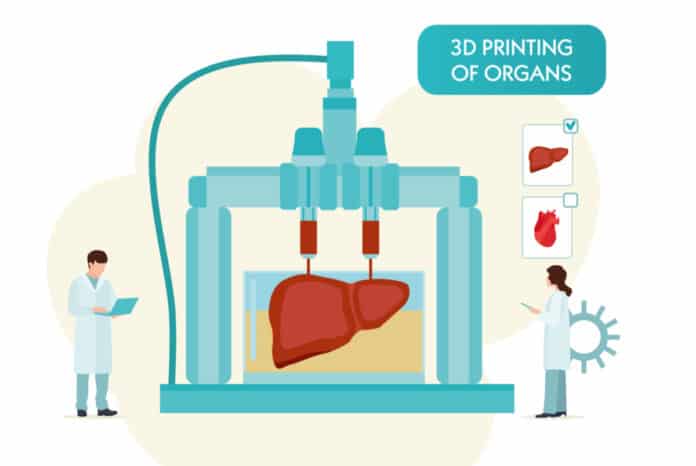Bioprinting complex living tissue in just seconds will revolutionize tissue engineering
Scientists from EPFL and the University Medical Center Utrecht in the Netherlands have now developed an extremely fast optical method for sculpting complex tissues in stem-cell-laden hydrogels and then vascularizing the resulting tissue. This groundbreaking technique of bioprinting complex living tissue in just seconds will revolutionize the tissue engineering field.
Tissue engineers create artificial organs and tissues that can be used to develop and test new drugs, to repair damaged tissue & even to replace entire organs in the human body. However, the current fabrication methods limit their ability to produce free form shapes and achieve high cell viability.
Scientists at the Laboratory of Applied Photonics Devices (LAPD), in EPFL’s School of Engineering, working with their colleagues from Utrecht University, have come up with optical technique bioprinting for complex living tissue. The resulting tissues can then be vascularized by adding endothelial cells.

The research team describes this high-resolution bioprinting method for complex tissue in an article appearing in Advanced Materials. This technique will change the way cellular engineering specialists work, allowing them to create a new breed of personalized, functional bio-printed organs.
The
technique is called volumetric bioprinting for complex living tissue. In order to create tissue, the scientists project a laser down a spinning tube filled with a stem-cell-laden hydrogel. They shape the tissues by focusing the energy from the light at specific locations, which then solidify. After a few seconds, a complex 3 Dimensional shape appears, suspended in the gel. The stem cell in the hydrogel is largely unaffected by this entire process. Researchers then introduced endothelial cells to vascularize the tissue.Scientists have now shown that it is possible to create tissue constructs measuring several centimeters, which is a clinically useful size. Some of their work includes a valve similar to a heart valve, a meniscus and a complex-shaped part of the femur. The team was also able to build interlocking structures.
Damien Loterie, an LAPD researcher and co-author of the study said that unlike conventional bioprinting which was a slow, layer-by-layer process, this new technique of bioprinting complex living tissue in just seconds is very fast and offers greater design freedom without jeopardizing the cell’s viability.
The scientists’ work of bioprinting complex living tissue is a real game-changer. Paul Delrot, another co-author, said that the characteristics of human tissues depend to a large extent on a highly sophisticated extracellular structure, and the ability to replicate this complexity could lead to a number of real clinical applications. Using this technique of labs could mass-produce artificial tissues or organs at an unprecedented speed. This sort of replicability is very essential when it comes to testing of new drugs in vitro, and this could help obviate the need for animal testing which is a clear ethical advantage as well as a new way of reducing costs.
Christophe Moser, the head of the LAPD, said that bioprinting complex living tissues is just the beginning. and he believes that this method is inherently scalable towards mass fabrication and this could be used to produce a wide range of cellular tissue models, not to mention medical devices and personalized implants.
Scientists plan to market their groundbreaking technique for bioprinting complex living tissue through a spin-off.






























